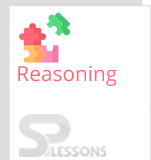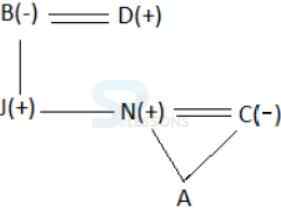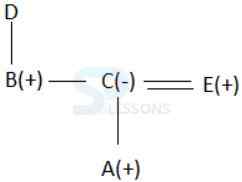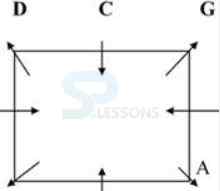 Introduction
Introduction
What is Reasoning Ability Test?
A logical Reasoning Test is a form of psychometric testing that is widely used by corporate employers to help assess candidates during their recruitment process. ‘Psychometric’ is just a fancy way of saying ‘measuring mental ability’ and logical reasoning tests are designed to measure your non-verbal skills.
The article IBPS PO Mains Reasoning Ability Quiz 1 provides Reasoning Ability questions with answers useful to the candidates preparing for Competitive exams, Entrance exams, Interviews etc. IBPS has released IBPS PO 2019 Official Notification. Reasoning Ability plays major role to qualify examination. The article IBPS PO Mains Reasoning Ability Quiz 1 will assist the students understanding of the type of questions expected from the topic Reasoning Ability. The online examination Preliminary is scheduled to be conducted on 2.10.2019, 13.10.2019, 19.10.2019 and 20.10.2019 (Tentatively), Mains exam is scheduled to be conducted on 30.11.2019.
 Quiz
Quiz
Direction(1-2): Study the following information carefully and answer the questions given below.
- If ‘M + N’ means M is the father of N
If ‘M * N’ means N is the brother of M
If ‘M – N’ means M is the wife of N
If ‘M # N’ means N is the mother of M
If ‘M % N’ means M is the son of N
- A. %, #
B. +, *
C. -, #
D. %, +
E. None of these
- A. A is brother of B
B. E is son of D
C. C is father of A
D. E is brother in law B
E. None of these
- A. 21
B. 37
C. 58
D. 43
E. 78
- A. 90
B. 120
C. 150
D. 180
E. 210
- A. 13
B. 15
C. 17
D. 31
E. 21
Direction(1-5): Study the following information carefully to answer the given questions
Eight friends- A, B, C, D, E, F, G and H are sitting around a square table in such a way that four of them sit at corners of the table while the other four sit in the middle of the four sides. Those who sit in the middle of the four sides face the centre while those who sit at the corners of the four sides face outside. A sits third to the left of C, who does not sit at any of the corners and C is an immediate neighbour of G. E sits to the left but not on the immediate left of F, who is not an immediate neighbour of C and E. B and H are not the immediate neighbors of each other and H is an immediate neighbour of A and E. A and D are also not immediate neighbour of each other. D does not sit in the middle of any sides and at least two persons can sit between A and D. E and G sit opposite to each other but do not face each other. F cannot sit opposite C.
1. H sits third to the left of whom?
- A. B
B. F
C. D
D. C
E. None of these
- A. Third to the left
B. Third to the right
C. Fourth to the left
D. Second to the right
E. None of these
- A. HG
B. GA
C. BE
D. AH
E. None of these
- A. H
B. G
C. D
D. E
E. None of these
- A. B
B. H
C. F
D. C
E. None of these
Direction(1-5): Study the following information carefully to answer the given questions.
There are seven persons A, B, C, D, E, F and G having a meeting on seven days of the week starting from Sunday in three different companies HCL, HP, and Infosys. There are minimum two and maximum of three persons work in the same company. The person who is having a meeting on Friday works in HCL Company. Person C is having a meeting on Wednesday and there are two persons between C and D. B and one other person work in HCL. There are three persons between both the persons work in Infosys company, and both do not have their meetings on Monday. There are two persons between E and F where E is always before F. A works in HCL and is having a meeting immediately before C. Number of persons who work in Infosys and HCL is same and D is having a meeting before C.
1. On which day person C’s meeting takes place?
Case 2:
When we reach to the condition where A work in HCL and is immediate above of C which is not followed here so we abort this case.
Case 3:
This case follows all the given conditions.
2. Answer - Option C
3. Answer - Option B
4. Answer - Option E
5. Answer - Option A
- A. Sunday
B. Thursday
C. Tuesday
D. Wednesday
E. None of these
- A. CE
B. AB
C. FD
D. GA
E. None of these
- A. One
B. Two
C. Three
D. Four
E. None of these
- A. Sunday
B. Monday
C. Tuesday
D. Wednesday
E. None of these
- A. One
B. Two
C. Three
D. Four
E. None of these
| Sunday | Infosys |
| Monday | |
| Tuesday | [A] HCL |
| Wednesday | [C] |
| Tuesday | Infosys |
| Friday | [B] HCL |
| Saturday | [D] |
| Sunday | |
| Monday | |
| Tuesday | Infosys |
| Wednesday | [C] |
| Tuesday | |
| Friday | HCL |
| Saturday | Infosys |
| Sunday | [D] Infosys |
| Monday | [E] HP |
| Tuesday | [A] HCL |
| Wednesday | [C] HP |
| Tuesday | [F] Infosys |
| Friday | [B] HCL |
| Saturday | [G] HP |










